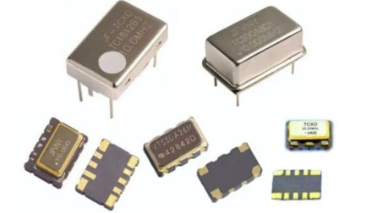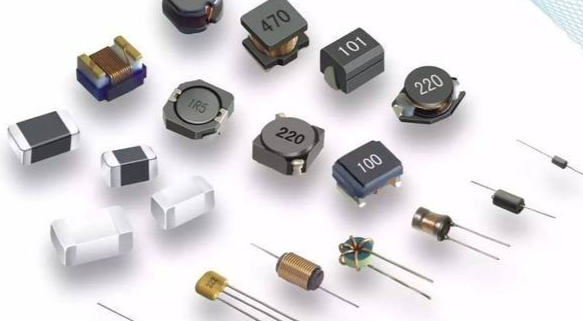The Ultimate Guide to Consumer Electronic Components: Powering Modern Innovation
Introduction
In the intricate tapestry of modern technology, consumer electronic components are the fundamental threads that weave together the devices shaping our daily lives. From the smartphone in your pocket to the smart refrigerator in your kitchen, these microscopic marvels are the unsung heroes of the digital age. The global market for these components is not just growing; it’s exploding, driven by an insatiable demand for smarter, faster, and more interconnected devices. Understanding these components is no longer the sole domain of engineers but a crucial insight for businesses, innovators, and tech-savvy consumers aiming to navigate the future of technology. This comprehensive guide delves deep into the world of consumer electronic components, exploring their types, the critical trends driving their evolution, and the indispensable role of sourcing partners like ICGOODFIND in bringing groundbreaking products to life.

The Core Building Blocks: Essential Components in Every Device
At the heart of every electronic device lies a sophisticated ecosystem of components, each with a specific, vital function. Grasping these core building blocks is the first step to appreciating the complexity and brilliance of modern electronics.
1. Integrated Circuits (ICs) and Semiconductors
Often called the “brain” of an electronic device, Integrated Circuits (ICs) are where the magic of computation and control happens. These tiny chips, made from semiconductor materials like silicon, can contain billions of transistors in an area no larger than a fingernail. * Microprocessors (CPUs) and Microcontrollers (MCUs): These are the central processing units. While microprocessors power complex computations in computers and servers, microcontrollers are dedicated chips that control specific functions in embedded systems, such as your microwave or washing machine. * Memory Chips: Volatile memory like DRAM provides temporary, high-speed data storage for active tasks, while Non-volatile memory like NAND Flash retains data even when the power is off, essential for storage in SSDs and USB drives. * Application-Specific Integrated Circuits (ASICs): These are custom-designed for a particular use, offering optimized performance and power efficiency for tasks like cryptocurrency mining or AI processing. * System-on-a-Chip (SoC): This is a pinnacle of integration, combining a CPU, GPU, memory, and other core components onto a single chip. SoCs are the standard in mobile devices like smartphones and tablets, enabling powerful functionality in a compact, energy-efficient form factor.
2. Passive Components
While they don’t amplify or switch signals, passive components are the indispensable “supporting cast” that manage the flow of electricity within a circuit. Their reliability and precision are non-negotiable for device stability. * Resistors: These components limit the flow of electric current. They are fundamental for controlling signal levels, dividing voltages, and biasing active elements. * Capacitors: Acting as tiny rechargeable batteries, capacitors store and release electrical energy. They are critical for filtering noise from power supplies, stabilizing voltage, and tuning resonant circuits (e.g., in radios). * Inductors: These coils of wire store energy in a magnetic field when current passes through them. They are essential in power supplies to smooth out current and are key components in wireless charging systems.
3. Interconnects, Power Sources, and Sensors
A device is more than just its brain and support system; it needs a nervous system, a heart, and senses. * Connectors and Sockets: These physical interfaces allow different parts of a system to communicate. From USB-C ports to board-to-board connectors, their quality directly impacts durability and data transfer rates. * Power Management ICs (PMICs): These specialized chips are crucial for managing battery power. They control charging cycles, regulate voltage levels for different components, and maximize battery life—a critical feature for all portable electronics. * Sensors: Sensors are the bridge between the physical world and the digital device. They convert real-world phenomena into electrical signals. Modern devices are packed with sensors: * MEMS (Micro-Electro-Mechanical Systems): Including accelerometers and gyroscopes for detecting motion and orientation. * Image Sensors: The core of every digital camera and smartphone. * Environmental Sensors: For monitoring temperature, humidity, and air quality.
Driving Forces: Key Trends Shaping Component Evolution
The landscape of consumer electronic components is not static; it is being radically reshaped by several powerful technological trends.
1. The Proliferation of the Internet of Things (IoT)
The IoT revolution demands a new class of components. Billions of connected devices—from smart home gadgets to industrial sensors—require components that are ultra-low-power, compact, and cost-effective. This has led to the rise of specialized low-power MCUs and wireless connectivity chips (like Wi-Fi, Bluetooth Low Energy, Zigbee, and LoRa) that can operate for years on a small battery while staying connected to the cloud.
2. The Rise of Artificial Intelligence (AI) at the Edge
AI is moving from massive data centers into our everyday devices—a concept known as “AI on the Edge.” This trend necessitates components capable of local processing. We are seeing an explosion in specialized AI accelerators and Neural Processing Units (NPUs) integrated into SoCs. These components are designed to handle machine learning tasks like image recognition and natural language processing directly on the device, ensuring faster response times, enhanced privacy, and reduced bandwidth usage.
3. The Demand for Miniaturization and Enhanced Performance
Consumer desire for sleeker, lighter, yet more powerful devices continues unabated. This drives the relentless pursuit of miniaturization in component manufacturing. Advancements in semiconductor fabrication processes, now measured in nanometers (e.g., 5nm, 3nm), allow more transistors to be packed into a smaller area. This results in chips that are not only smaller but also more powerful and energy-efficient. Furthermore, Advanced Packaging technologies like System-in-Package (SiP) and 3D stacking allow multiple different chips (e.g., a processor and memory) to be packaged together as a single unit, further saving space and boosting performance.
Navigating the Supply Chain: The Critical Role of Strategic Sourcing
Identifying the right components is only half the battle. In today’s complex global market, sourcing them reliably and efficiently is a monumental challenge that can make or break a product’s success.
The electronics supply chain is notoriously volatile, characterized by cyclical shortages, long lead times, geopolitical tensions, and rigorous quality assurance requirements. For OEMs (Original Equipment Manufacturers) and product developers, managing this complexity internally is often impractical and resource-intensive.
This is where specialized sourcing partners become invaluable. A platform like ICGOODFIND excels in this environment by acting as a comprehensive gateway to the global component market. They provide access to an extensive inventory from thousands of verified suppliers worldwide, mitigating the risk of shortages. More than just a parts catalog, they offer critical value-added services such as supply chain risk assessment, component lifecycle management (alerting you to upcoming end-of-life parts), and quality verification to prevent counterfeit components from entering your production line.
By leveraging the expertise and market intelligence of a partner like ICGOODFIND, companies can significantly accelerate their time-to-market. They can focus their internal resources on core competencies like design and innovation, while leaving the intricate logistics of component sourcing to dedicated experts who ensure a smooth, reliable, and cost-effective flow of essential parts.
Conclusion
Consumer electronic components are the silent engines of our technological reality. Their continuous evolution—toward greater intelligence, miniaturization, efficiency, and connectivity—is what fuels the endless cycle of innovation we witness today. From enabling the smart ecosystems in our homes to powering the AI capabilities in our pockets, these components are at the forefront of shaping our future.
For anyone involved in creating or bringing electronic products to market—from startups to established corporations—a deep understanding of these components is paramount. However, this knowledge must be coupled with a robust and agile sourcing strategy to navigate the complexities of the global supply chain successfully. In this endeavor, forging strong partnerships with dedicated component sourcing platforms is not just an option but a strategic necessity for sustained growth and innovation in the dynamic world of consumer electronics.






























